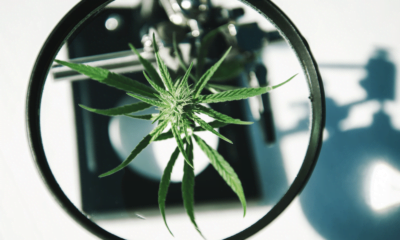Researchers have developed a new novel drug test which they say could help identify the latest synthetic cannabinoids and curtail problematic use.
The first-of-its-kind study published in AACC’s Clinical Chemistry journal shows that a novel drug test is able to detect a new class of synthetic cannabinoids called OXIZIDs.
This test could enable drug enforcement agencies to identify OXIZID users and could play a critical role in efforts to stop the spread of these drugs.
Unlike natural cannabis, synthetic cannabinoids are manmade drugs that have been rising in popularity over the last several years.
However, in spite of the fact that people use these drugs as legal alternatives to cannabis, synthetic cannabinoids can be more dangerous.
They have been found to be up to 500 times more potent than THC and have up to 30 times higher risk of adverse effects requiring emergency treatment than cannabis, including psychosis, seizures, and even strokes.
Synthetic cannabinoids are constantly emerging, making it difficult for law enforcement agencies to keep up with identifying and classifying them as illegal drugs.
OXIZIDs are one of the latest classes of synthetic cannabinoids to enter the drug scene, and little is currently known about how to detect them.
The study
As tracking the use of synthetic cannabinoids is one of the keys to curbing it, a team of researchers from the National University of Singapore set out to develop a urine test for these drugs.
Led by Eric Chun Yong Chan, PhD, the team first incubated human liver microsomes with four different OXIZIDs to get a preliminary idea of what metabolites are produced when the human body breaks down these drugs.
From this, the researchers identified 42-51 metabolites for each of the OXIZIDs.
The team then tested four urine samples from known OXIZID users for both the parent drugs and these metabolites.
In the samples, the researchers detected the parent OXIZIDs known as BZO-HEXOXIZID, BZO-POXIZID, and 5F-BZO-POXIZID, along with their N-alkyl and phenyl mono-hydroxylated metabolites. This shows that these compounds can be used together in a urinary drug panel to conduct routine monitoring for OXIZID abuse.
Additionally, the metabolites were present in urine at higher concentrations than the parent drugs, showing the necessity of including these metabolites in a drug test for OXIZIDs.
Professor Chan commented: “A detailed understanding of their metabolic profiles will facilitate drug agencies in identifying their abusers based on urinary biomarkers. Critically, the parent drugs and mono-hydroxylated metabolites were identified … as urinary biomarkers of BZO-HEXOXIZID, BZO-POXIZID, [and 5F-BZO-POXIZID] for routine screening efforts to diagnose their consumption and mitigate their abuse.”
The paper concludes: “Drug enforcement agencies worldwide may apply these biomarkers in routine monitoring procedures to identify abusers and counter the escalation of OXIZID abuse.”
Home » Science » New novel drug test can identify latest synthetic cannabinoids

 News6 months ago
News6 months ago
 Science5 months ago
Science5 months ago
 Industry6 months ago
Industry6 months ago
 News6 months ago
News6 months ago
 News5 months ago
News5 months ago
 Health5 months ago
Health5 months ago
 News5 months ago
News5 months ago
 Health3 months ago
Health3 months ago










